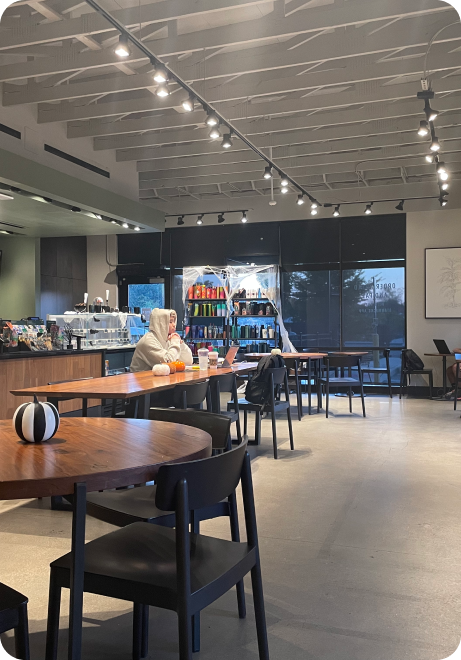UX Research & UI/UX Design > Starbucks
Starbucks
User Needs Analysis
Background
With a population exceeding 100,000 residents, Edison boasts five Starbucks coffee establishments within its bustling city. Positioned strategically along Rt. 27, the Starbucks holds a central role in the community, being conveniently close to the train station, J.F.K Hospital, multiple offices, six schools, two retirement homes, Theodore Roosevelt park, and the garden state parkway. Over time, this particular location has consistently drawn in a steady stream of customers, including myself as a passing driver. I got a unique chance to explore and analyze the possible factors behind the enduring popularity of this beloved coffee shop.
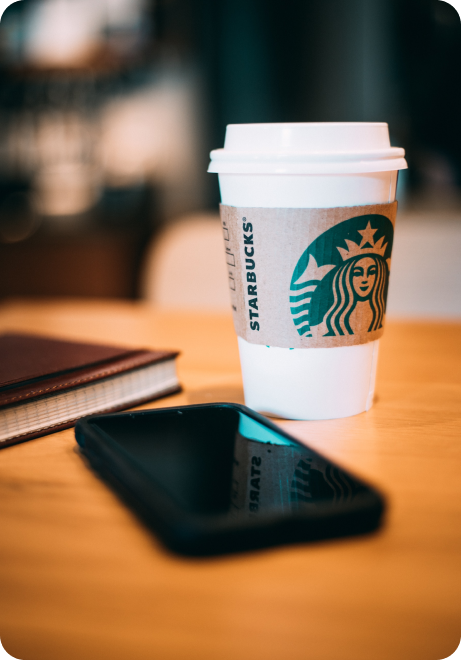

Architecture
Looking at the architecture from the outside at first glance, the dark stone exterior of the building immediately gives you the feeling of a modern, new, and warm place, with floor-length windows inviting and sharing the joyful expressions of customers from the inside. This particular Starbucks has two entrances where people can enter the building to grab a coffee, a drive-thru for consumers in a rush, and a mobile application that can quicken the process of ordering for consumers who prefer to have their beverages ready for pick up when they arrive. The structure gives customers many opportunities to interact with the space and build a better experience for themselves.
Field Site Observations: Overview
I conducted field site observations at different times of the day, on separate days of the week, to understand the time the most rush occurred, the demographics of consumers coming in, and the different activities occurring within the confined space. Sometimes, I would visit the coffee shop and immerse myself into the atmosphere of the cafe, listening to the background music, the sound of coffee grinding or whipped cream coming out of the dispenser, the smell of fresh coffee, people coming in to place their orders, or eavesdrop into some conversations.
After observing the cafe, I would question why customers visit this Starbucks coffee shop. Is it the brand’s ability to develop an emotional and everlasting connection with its consumers? What strategies does Starbucks use to foster positive relationships with its customers? To understand, analyze, and answer these questions, I spent the next few weeks conducting interviews and implementing methods I learned from this course to develop models to help.
Methods
One of the first methods I used in my research was conducting first-person observations at the field site and jotting down as many details as I could notice. Over three days, I visited the coffee shop at different times; before work, during the lunch break, and in the evening. I would pay attention to the physical space, objects, actors, and the actions they performed, the events the actors carried out and the sequence of the events, and the goals and feelings actors felt and expressed during their time at the cafe. While observing, I also paid attention to smell, touch, feel, and sound to have a detailed and descriptive analysis of the data I collected.
After developing a fair amount of data, I developed questions to conduct interviews with participants within the space. I interviewed three participants who frequently came to Starbucks with different goals. With a collection of observations and interviews, I developed work models which would best represent and enhance the study of my research; identity, sequence, and physical models.
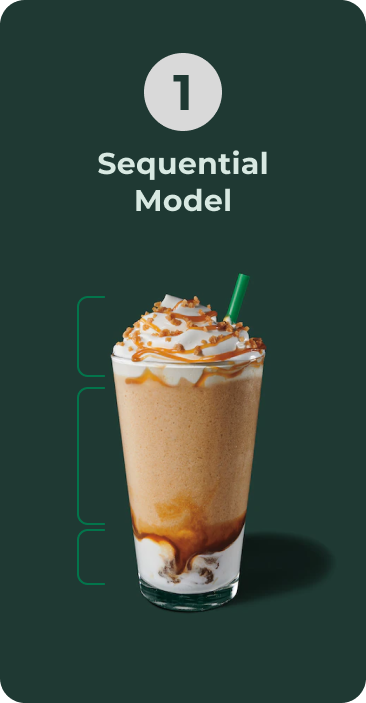
Sequential Model
On my second day of conducting interviews, I identified a potential participant and chose to observe her interactions within the environment. Similar to my field-site observations of the physical space, I closely monitored her movements within the Starbucks cafe. I meticulously recorded every action taken by her and her friends, step by step, and continued to document the details. Upon delving into literature about research models, I opted to utilize the sequential data I had gathered. This approach enabled me to comprehend the participant's initial objectives, the challenges she encountered, the triggers she responded to, and the sequence of activities carried out during her visit. Utilizing sequential models facilitated the organization of my observations, allowing me to document them in the order they occurred and review my findings. This method streamlined the process of understanding consumer behavior, recurring activities within the space, and the objectives individuals aim to fulfill.
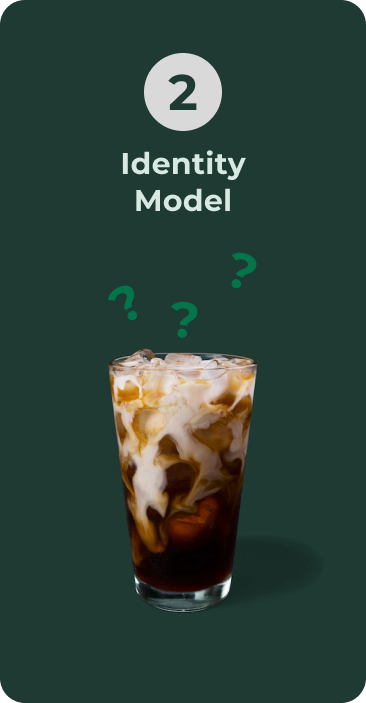
Identity Model
The identity model proved to be a valuable framework as it allowed me to delve into the connections participants forged with Starbucks and what motivated them to become frequent visitors over time. Unlike other models, I extracted quotes and paraphrased segments from interviews, dissecting the information they conveyed. This approach helped me discern the "core identity elements associated with the target activity" (Holtzblatt et al., 181).
Each person's experience was distinct, and everyone I spoke to had a unique goal when visiting Starbucks, whether it was grabbing a coffee before work, buying a gift card for a friend, or meeting classmates to savor their favorite beverages. This approach deepened my comprehension of the various values that Starbucks had cultivated.
Initially, I grappled with how to approach this model effectively, but as I delved further into identity models and their purpose, I came to realize that they are an excellent way to acknowledge the diverse approaches consumers adopt in performing an activity. The concepts of 'I plan, I am, I like' proved invaluable in breaking down and gaining insights into people's personal stories.
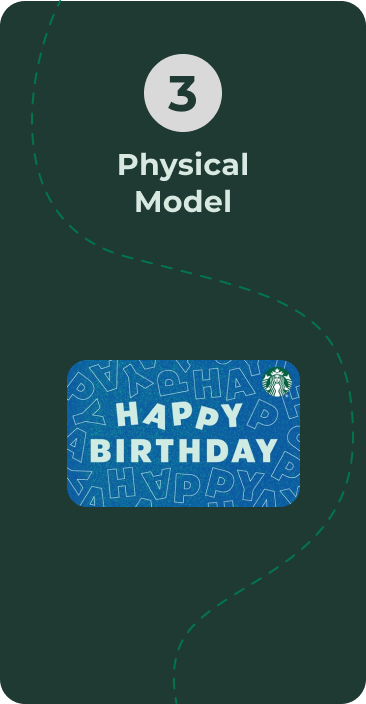
Physical Model
Exploring alternative models, I found that a physical model helped me better understand the interior architecture of the Starbucks cafe and how customers interacted within the space. By mapping the distances participants covered from the side entrance to key areas like the merchandise shelf, gift card section, deli case, cash register, seating, pick-up station, and main entrance, I gained valuable insights.
I noticed that regular visitors often used the side entrance to reach the merchandise counter quickly. Additionally, the strategic placement of the drive-thru window opposite the "pick-up" station facilitated efficient service for online orders.
This approach highlighted the significance of comprehending the cafe's physical layout to analyze interactions and flow. Physical models offer a comprehensive view of interaction hotspots, spatial layout, and space dynamics, enriching research perspectives.
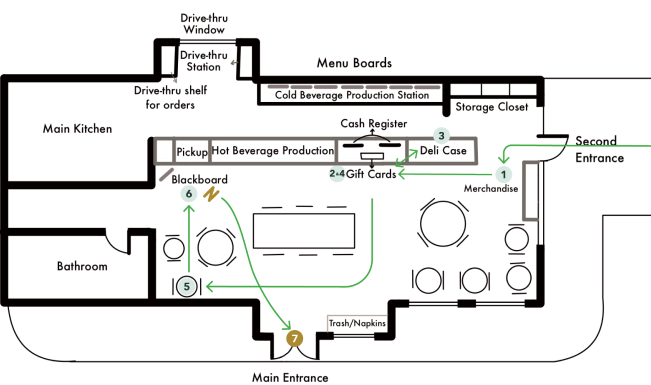
Example

Quotes/Paraphrases
I am here to buy a gift card for my friend's birthday tomorrow. I think it's the perfect gift to get my friend because she loves Starbucks so much. It's easy for me to buy a gift for her too because I can come here, get some tea for myself, pick up a gift card and sometimes I’ll even buy her a mug or tumbler if I know she needs a new one. It’s so convenient. PLUS, gift cards are super easy to fit inside birthday cards… It's small, cute, and loaded with free beverages for my friend, which I know she’ll love. I meet a lot of my friends here. There’s no room in my house to seat guests, and everyone feels comfortable coming here, finding a table to sit down on which we have no trouble with, and chatting a bit. It works out for everyone. Plus, the drinks here are like little splurges we spend on ourselves. Having a Starbucks drink is like a little treat!
Give Me
- Visits Starbucks as a place of social gathering, relaxation, and reconnection
- Has a favorite beverage at Starbucks and it always tastes the same
- Never disappointed in flavor
- Orders customized drinks with friends, pick up orders quickly, and find a nice spot to sit and chat
- Need a spacious place with plenty of seating
- A place where mobile and other electronic devices can login Starbucks WiFi and work or share
- A place to purchase merchandise for birthdays easily and quickly which the receiving party will love and enjoy
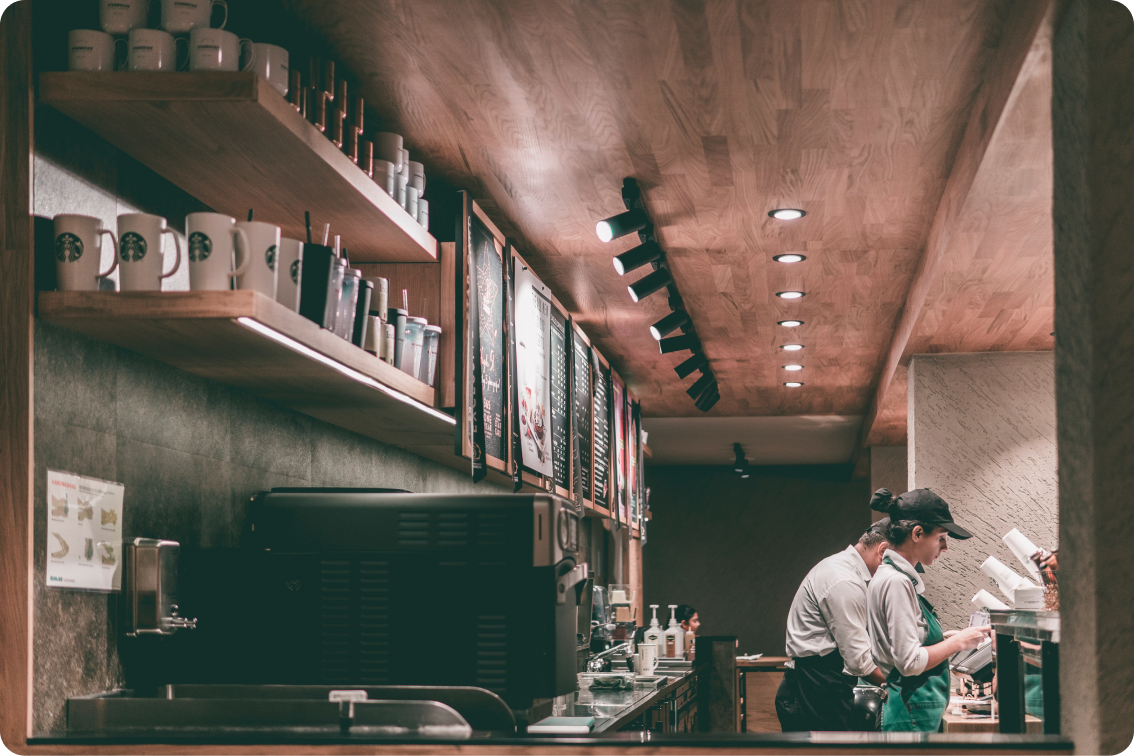
Conclusion
These models aided me in comprehending the observations, interviews, and questions I had developed over the past few weeks. Visual models proved effective in delineating timelines and specific details, allowing me to focus on the data collected over an extended period.
From my observations, it became evident that Starbucks had finely tuned its system to cater to the unique preferences of customers in terms of comfort, spatial layout, accessibility, and flavor. The familiarity and comfort associated with one's preferred flavor choices are often challenging to replicate and can sometimes even impact relationships. Starbucks has honed the art of crafting flavors that resonate with individuals, and it's renowned for its customizable drinks, offering customers a sense of special treatment and an easy way to indulge themselves.
Beyond perfecting flavors, Starbucks has created an ambiance that captures the essence of a traditional coffee house. Every detail, from the coffee-like stains on the wooden furniture to the forest-green paint on the walls and the warm, subdued lighting, heightens the sensory experience upon entering the environment. The Starbucks experience transcends boundaries, appealing to both emotional and physical senses. Their cafe design provides a well-rounded experience that emotionally comforts customers through taste and physically through the carefully curated space.
